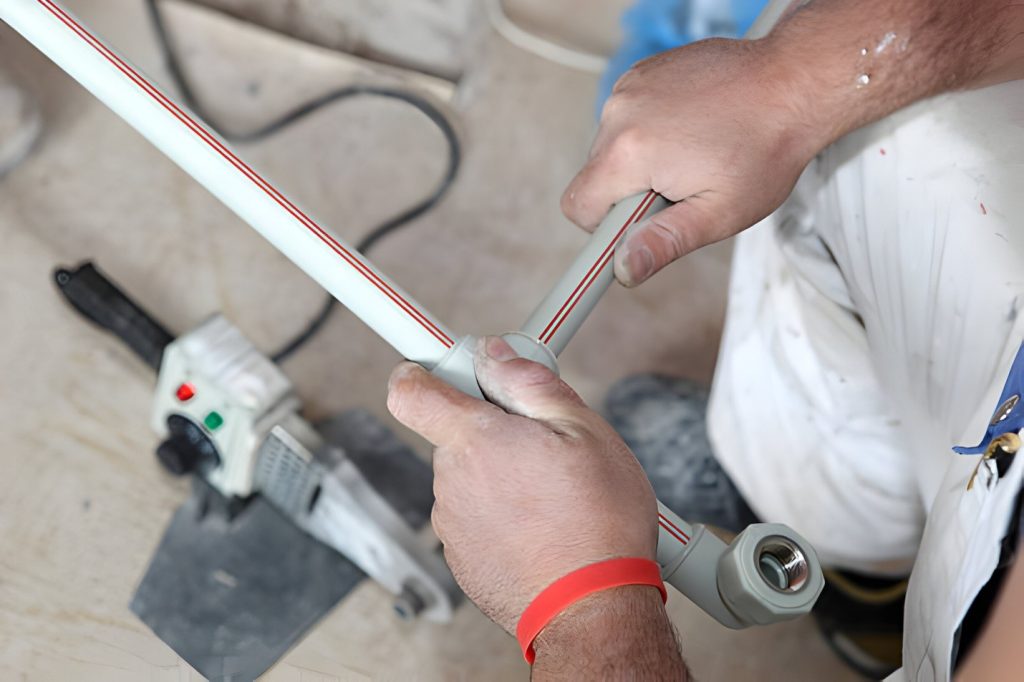Water hammer is a common plumbing issue that can cause significant damage to water supply systems. The sudden stoppage of water flow, usually caused by quickly closing a valve or faucet, creates a shockwave through the pipes. This shockwave can result in loud banging noises and potential damage to the plumbing infrastructure. To mitigate this problem, water hammer arrestors are used. This article explores the function of water hammer arrestors and their importance in the context of Saudi Arabia.
What is a Water Hammer Arrestor?
A water hammer arrestor is a device designed to absorb the shockwave created by water hammer, thereby preventing the associated noise and potential damage to the plumbing system. It typically consists of a sealed chamber containing a spring or a cushion of air. When the shockwave hits the arrestor, the spring or air cushion absorbs the energy, reducing the pressure surge.
How Does a Water Hammer Arrestor Work?
Water hammer arrestors are installed near valves and faucets, where the sudden stoppage of water flow is most likely to occur. When a valve is closed rapidly, the kinetic energy of the moving water is converted into a pressure wave. The arrestor’s chamber absorbs this energy, dissipating the shockwave and preventing it from traveling through the pipes. This process not only reduces noise but also protects the plumbing system from potential damage caused by repeated pressure surges.
Importance of Water Hammer Arrestors in Saudi Arabia
Saudi Arabia, with its modern infrastructure and rapidly growing urban areas, relies heavily on efficient and reliable plumbing systems. Here are several reasons why water hammer arrestors are particularly important in this context:
- Protecting Infrastructure: The advanced plumbing systems in Saudi Arabia’s high-rise buildings and industrial facilities are susceptible to water hammer due to the high pressure and flow rates. Water hammer arrestors help protect these systems, ensuring their longevity and reducing maintenance costs.
- Reducing Noise Pollution: In residential areas, the noise caused by water hammer can be a significant disturbance. Installing water hammer arrestors in homes and apartments can greatly reduce this noise, contributing to a more peaceful living environment.
- Preventing Damage to Appliances: Many modern appliances, such as washing machines and dishwashers, are connected to the water supply. These appliances can be damaged by the sudden pressure surges caused by water hammer. Water hammer arrestors help protect these valuable appliances, extending their lifespan and reducing repair costs.
- Compliance with Standards: Saudi Arabia has strict building codes and standards to ensure the safety and reliability of its infrastructure. Using water hammer arrestors helps comply with these regulations, ensuring that plumbing systems are safe and efficient.
- Supporting Sustainable Water Management: By preventing leaks and damage caused by water hammer, arrestors contribute to sustainable water management. This is particularly important in Saudi Arabia, where water conservation is a key concern due to the country’s arid climate.
Installation and Maintenance
Proper installation and maintenance of water hammer arrestors are crucial for their effective operation. It is recommended to have these devices installed by professional plumbers who can ensure they are placed in the optimal locations within the plumbing system. Regular maintenance checks are also important to ensure that the arrestors are functioning correctly and have not lost their ability to absorb shockwaves.
Conclusion
Water hammer arrestors play a vital role in protecting plumbing systems from the damaging effects of water hammer. In Saudi Arabia, where advanced plumbing infrastructure is crucial for urban development and industrial operations, the importance of these devices cannot be overstated. By reducing noise, preventing damage to appliances, and supporting sustainable water management, water hammer arrestors contribute to the overall efficiency and reliability of water supply systems. Proper installation and maintenance are essential to ensure their continued effectiveness and compliance with local building standards.
